wikiHow is a “wiki,” similar to Wikipedia, which means that many of our articles are co-written by multiple authors. To create this article, volunteer authors worked to edit and improve it over time.
This article has been viewed 65,426 times.
Learn more...
Close-up magic frequently uses common, everyday objects that are familiar to the average spectator. When you make a coin appear to levitate and break the rules of basic physics, you may find an audience to be stunned and mystified. There are several methods for making a coin appear to levitate. Many rely on sleight of hand, which means you will spend some time practicing until you've perfected the illusion. from training your hand to pop up a coin in the air to making a coin invisible, to simply levitating one, you can amaze your friends.
Steps
Using the Muscle Pass
-
1Find the magic spot on your palm. The muscle pass is one of the most impressive sleights and one of the few ways to make a coin look like it’s levitating. This is because it involves developing the muscles in your palm. The trick is done by using the pads on your palm near your thumb to shoot the coin up into the air. [1]
- Open your dominant hand and study your palm. Notice the padded area at the base of your thumb. This is the magic spot where you will place the coin.
- Grab a larger coin like a half-dollar or even a poker chip. A quarter will be too small in most cases.
- Push the coin into your palm with your other hand. Then move your thumb over the coin. Notice how the muscle and padded part of your hand below your thumb begins to cover the coin. Play around with the position of the coin in your palm until you feel comfortable with the coin being held in place by the padding on your palm.
-
2Turn your hand palm down. With the coin in your hand, turn it over. See if the coin falls out or stays in your palm. Spread your fingers out slowly until the coin falls.
- Adjust the coin in your palm until you can turn your hand over with your fingers uncurled slightly so your hand looks natural.
- This is known as palming a coin and is the basic ability you will build on to perform a muscle pass. [2]
- Likewise, practice picking up your coin off a table by palming it. This will probably be very difficult at first. But it’s a great way to develop your muscles in your palm.
Advertisement -
3Practice popping the coin out of your hand with the muscle pass. This will probably take weeks to get the hang of. The muscle pass is a very advanced trick, and practicing it can hurt. [3]
- With the coin placed in the sweet spot of your palm, push it down. You can either use the fingers on your other hand to push the coin into your palm or use your middle and ring finger on your hand to push the coin in. Using the fingers on the hand that is holding the coin will make this process look more natural.
- Bring your thumb over the coin. Here you are moving your thumb so the padded, muscled area below your thumb goes over the coin. Try to keep you fingers from curling over. If your fingers are curled over the coin, it will hit your fingers and not pop up.
- Snap your thumb back and down. This motion is what will eventually cause the coin to fly upward.
-
4Adjust the coin's placement. Reposition the coin if you feel like you’re not getting enough grip on the coin as you move your thumb back. It will take some time to find the best place to put the coin.
- The muscle pass will take a lot of practice to accomplish. But don’t practice too much. Once your hand starts to hurt or gets red, stop trying to pop up the coin and take a break. If you keep at it, you’ll eventually get the coin to fly up.
-
5Perform the muscle pass. To perform the muscle pass trick, you will produce a coin and explain that you can magically float it up out of your one hand into the other. [4]
- Don’t explain the mechanics of the trick as that will hurt the illusion. Don’t say that you will perform a muscle pass. Instead, say that you can float or levitate the coin upward.
- Hold your other hand over the hand with the coin and wiggle your fingers for effect.
- As you do this, make sure the coin is pressed into your palm in the right spot with your middle fingers.
- If you want, you can say some magic words. Then, flip your thumb back and perform the muscle pass.
- Catch the coin in your other hand.
Vanishing and Hanging and Invisible Coin in Mid-Air
-
1Make the coin “vanish”. This trick isn’t as much about levitating an actual coin as it is about the illusion of making the coin invisible, then making it reappear.
- To begin the trick, you will need to make the coin disappear from your hand. It’s easier to learn with a larger coin like a half-dollar, but you can use a quarter or other similarly large coin.
- Using a finger palm vanish, pretend to transfer the coin from one hand to the other. The finger palm works like a regular palm, except you keep the coin in place with your two middle fingers. Hold the coin in place between your fingers and the first joints closest to your palm. [5]
- This part of the trick is similar to a French Drop where you pretend to transfer the coin from one hand to the other while palming the coin in your original hand.
- While finger palming the coin, bring your empty hand up toward your eye level while you lower the hand with the coin. Rub your fingers together with your empty hand to make it look like you’ve made the coin “vanish”.
- However, describe to your audience that you’ve simply made the coin invisible. Open your hand to reveal the invisible coin.
-
2Pick up the invisible coin to levitate it. Here, you can explain how in order to levitate the coin, you have to make it invisible so that it no longer weighs too much to float.
- Pretend to pick up the coin as if it were there. The next few parts of this trick will require you to be convincing with your space object work.
- Also note that you are picking up the invisible coin with the hand that is actually holding the coin. Keep your coin in finger palm position, and always angle your hand so the audience can’t see the actual coin.
- Before doing this trick, practice actually picking up your real coin. Notice how the weight feels in your hand, how your fingers are positioned, and how your hand moves.
- Pretend as though you were picking up a coin now. Remember what it looked like when you actually picked up a coin. Don’t pinch your fingers together. Even though a coin is thin, there would still be a tiny amount of space in between your fingers when holding one. Remember the weight of the coin as well.
- Place the invisible coin in the air and let go. Describe that you can simply put the invisible coin in the air where it will hang until you need it.
- Keep in mind when you do this that you will be finger palming the actual coin. As you place the coin to hang in the air, angle your hand so your audience can see the open palm, but keep the coin covered by holding it in between your fingers.
-
3Grab the invisible coin. Once you’ve let the invisible hanging coin part of the trick settle in, grab the coin out of the air with your empty hand.
- Take the invisible coin, paying attention to your space object work, with the hand that you’re not palming the coin in.
- Raise the hand with the real coin in it up to meet your empty hand.
- As you do this, keep the coin in your finger palm but tilt your hand just enough so the audience can see that your palm is empty.
- Describe that whenever you need the coin back, all you have to do is make it reappear.
-
4Make the coin reappear. As you place the invisible coin into the palm of the hand that is holding the actual coin, begin to curl your fingers over. [6]
- As you begin to make a fist, let the coin drop out of the finger palm. It will fall over the index finger of your other hand.
- With your thumb, pinch the coin in between your thumb and forefinger as your other hand curls around into a fist.
- You will now be holding the coin in the same hand that you used to grab the invisible coin out of the air with.
- Open your hand to reveal that the coin has become visible again.
Levitating a Coin Between your hands
-
1Grab a novelty sized coin. This trick employs an oversized novelty coin. You will make it appear that the coin is levitating within the space made between your hands when the hands are loosely cupped together. This trick is harder to pull off when close to your audience as you will be touching the coin at all times.
- The size of the coin is important, as it must be sufficiently large to still be visible behind the fingers.
- To perform the effect, pick up the coin with either hand.
- Bring the other hand to the coin and hold it with both hands, thumbs facing you.
-
2Place your thumbs and fingers at the edges of the coin. Make sure the pads of your thumbs are resting on the left and right edges of the coin.
- Your thumbs should be pressing inwards against the coin, holding it up.
- Your fingers should be curled, with the fingertips merely resting lightly against the front of the coin.
- Make sure that only your thumbs are actually holding the coin up.
-
3Extend your arms. You can help the illusion by extending your arms slightly and then pulling back toward you. The constant movement will help to distract the audience.
- Slowly straighten your fingers. Extend your fingers toward each other. The right and left fingertips should be about 1 inch (2.54 cm) away from each other.
- Keep your fingers as close together as possible. You want to use your fingers as a sort of barrier so that the spectator can't see your thumbs holding the coin.
- As you straighten your fingers, also move your thumbs up and down in very small movements. It will appear as though the coin is hovering in the air between your fingers.
-
4Practice the levitating coin effect until you can achieve it without fumbling. This might take some time to make look as real as possible.
- Once you have the handling of the coin down, observe yourself performing it in front of a mirror. Check to make sure that you're considering the spectator's perspective.
- Ensure that the coin can be properly seen. Also, practice it under the conditions that you will display it. If you plan to sit at a table, practice it at a table as you will be closer to your audience.
- Practice holding the coin with the pads of your thumbs so that it doesn’t look quite like you’re holding the coin in between each one.
- See if you can get the coin to spin or rotate without dropping it to enhance the illusion. This will take some practice. Use your fingers to block the view of your thumbs.
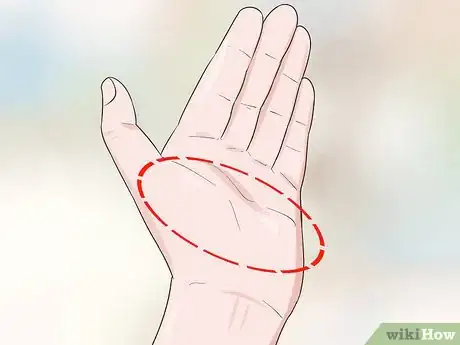
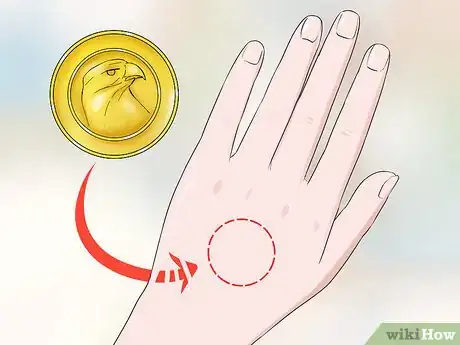
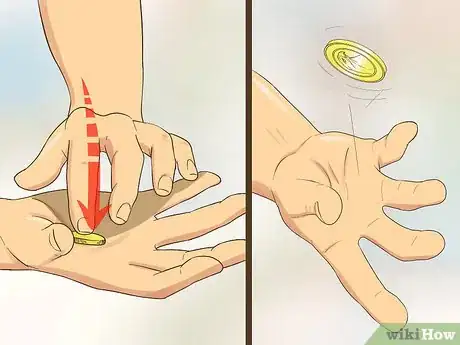
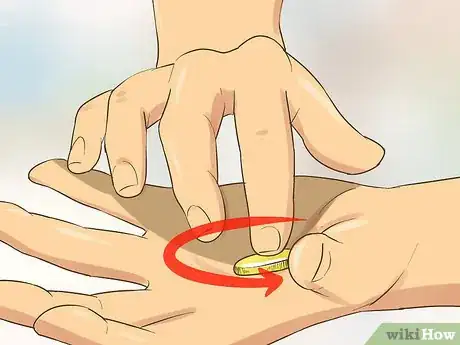
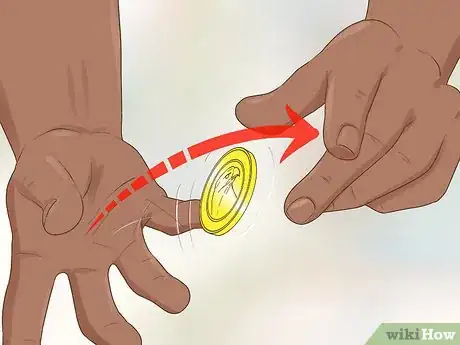
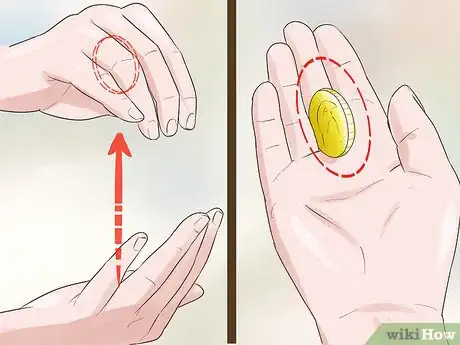

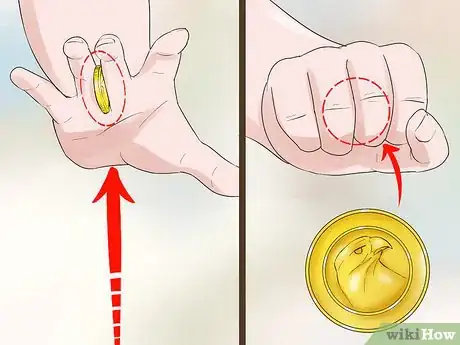
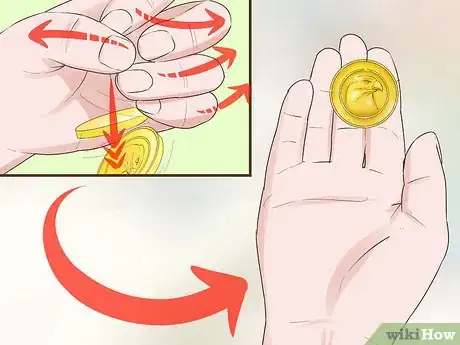

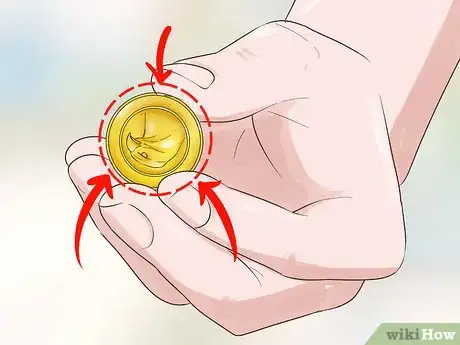
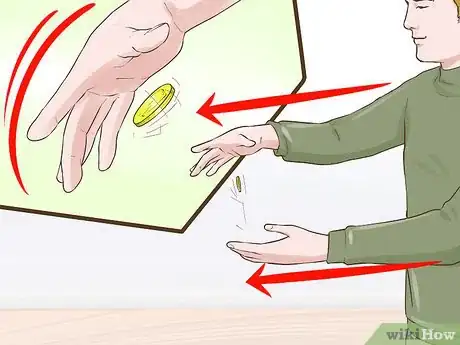
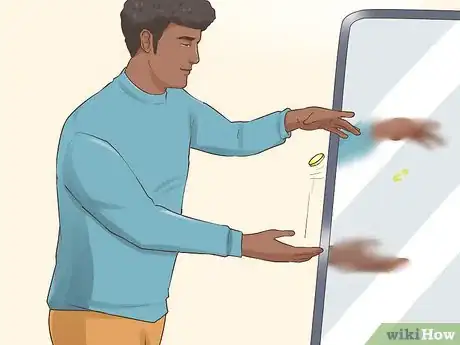
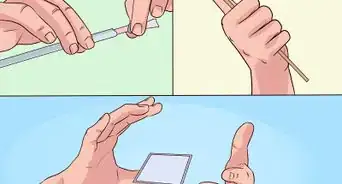
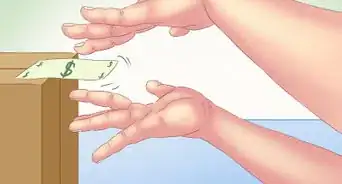
-Step-7-Version-4.webp)


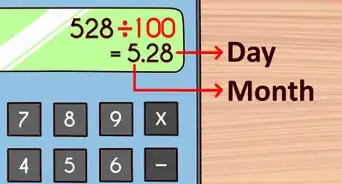

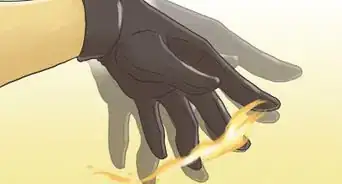
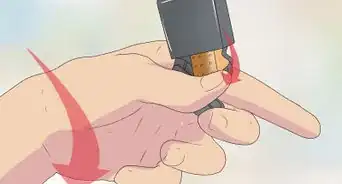








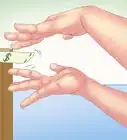
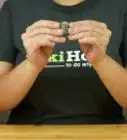
-Step-7-Version-4.webp)


































